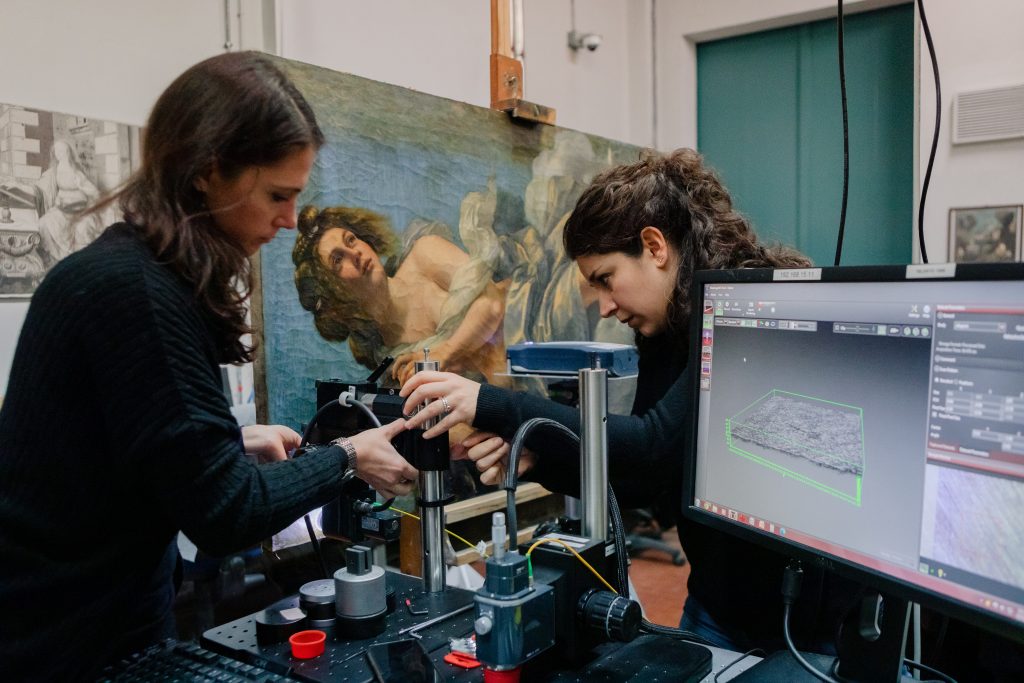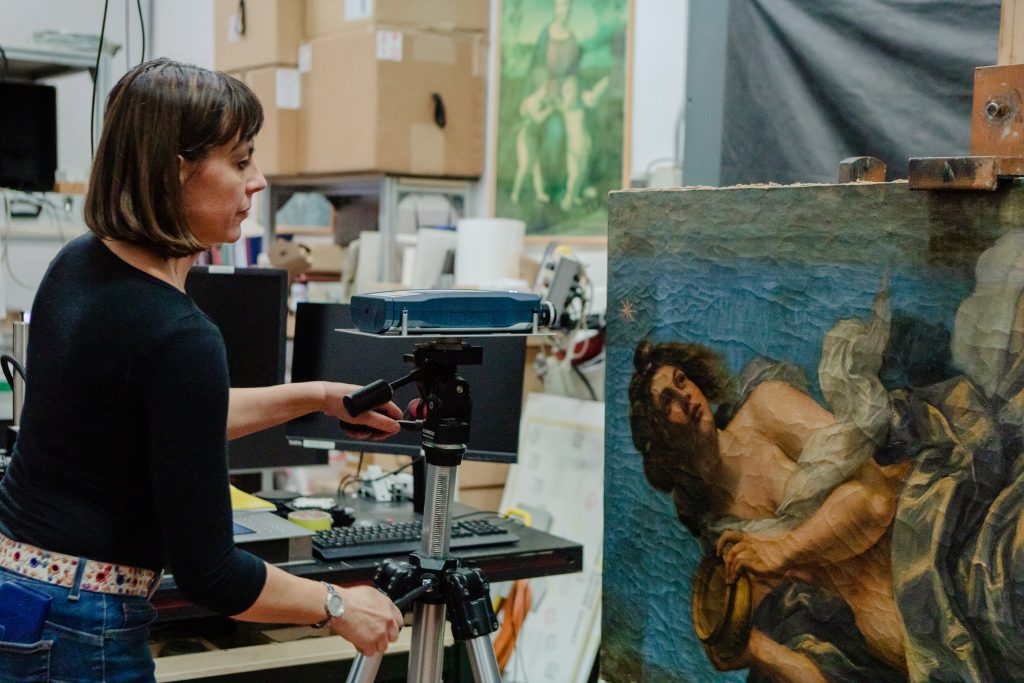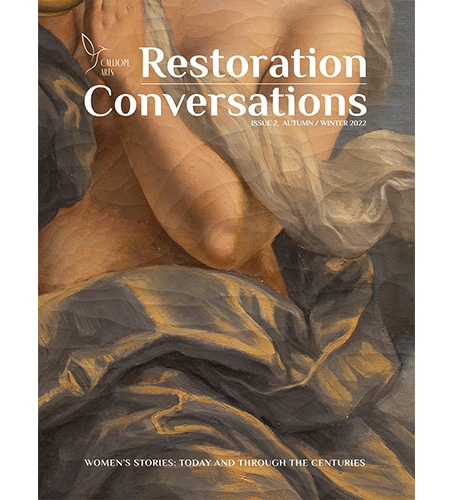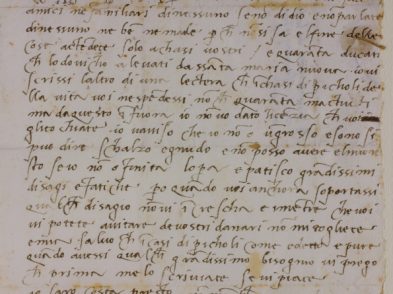Most people consider art conservation a painstaking process where elbow grease and solvent save the day, and there’s no arguing it’s a job for skilled hands and eagle eyes, but sometimes this bird’s-eye view involves 32 layers of x-ray vision—something like what Superman might see—or, in this case, superwoman.
Physicist Raffaella Fontana is Director of Research at the National Institute of Optics (INO) in Florence, where she has been working for over two decades. The institute is the art world’s best-kept secret because it’s where the science side of restoration meets the eye at the micron level. Part of Italy’s National Research Council, INO’s branches are scattered throughout the country, from Brescia to Naples. Its metrology lab in Florence is hosted at the Fortezza da Basso, inside the famed Opificio delle Pietre Dure, one of the world’s foremost restoration laboratories.

The two agencies operate under different ministries—INO is the brainchild of the Ministry of University Studies and Research—but they work together via an agreement, whereby INO performs diagnostics on paintings being restored at the Opificio and elsewhere and, in so doing, compiles fundamental data on how to improve restoration technology, based on how their machines perform when faced with historic artworks.
“INO’s first mission is to develop machinery capable of supplying non-invasive, non-contact technology. We design these machines in our headquarters in Arcetri, the place of Galileo’s exile, and they reveal how a painting interacts with electromagnetic radiation. For instance, we develop multispectral scanners that work with 32 bands of radiation, ranging from visible to infrared light for the purposes of high-resolution diagnostic analysis. However, doing fieldwork on hundreds of paintings that have individual requirements and specific life-stories is the only way we can gauge whether our machines truly respond to the needs of art conservation. Working with ‘fabricated samples’ won’t tell us what we need to know; we need the real thing,” Dr. Fontana explains.

“The real thing”, in this case, is Artemisia Gentileschi’s Allegory of Inclination, removed from the ceiling at Casa Buonarroti Museum last September, as part of a conservation project called Artemisia UpClose, conceived and funded by Calliope Arts and Christian Levett. Since most art lovers do not spend their day jobs on the science shift, I asked Dr. Fontana to explain, in the simplest of terms, what she and the INO team will be looking for as the Artemisia investigation continues.
“We are making a virtual 3D model,” she says. “Millennials will know what I mean because it’s the same technology used to create video-game avatars. When we’re through, we’ll be able to rotate the work in space and see it from all sides: explore the canvas, the stretcher and the level of tension characterizing the painting once conservator Elizabeth Wicks re-stretches the canvas. We will be able to zoom into Artemisia’s pentimenti, where she changed her mind, and follow the contours of her craquelure, which is different from any other painting I have ever seen. Her patterns are larger and more spread out than usual.”
“This is micrometric analysis, but it is without distortion, so we see how cracks are formed over time, if they contain paint and how they can be corrected. Using a technique called optical coherence tomography, we study the thickness of the varnish and document the painterly layer before and after the restoration process. One day, if we would like, we will be able to transform this virtual model, using a CAD programme, and create a physical model, similar to what they did at the Guggenheim with Jackson Pollack’s Alchemy.”
“Is your own work like alchemy?” I asked the physicist. “We work with energy, but nothing we do changes the artwork. Still Artemisia is taking us into her confidence. So, you might say, we are the ones changed by such close contact with her painting.”

Issue 2, Winter 2022
RC #02 – Artemisia UpClose, Casa Buonarroti, Levett Collection, Royal Academy, Arnaldi, Silk making, J. M. Cameron, Musica Secreta
Restoration Conversations magazine is a bi-annual online publication, which ‘restores’ the creative achievements of historic women for today’s audiences. Its features draw inspiration from the mission of Calliope Arts, a not-for-profit organisation, based in Florence and London, dedicated to raising awareness of women’s stories in the arts, sciences and social history through restoration, exhibition, education and research, as well as by means of ‘conversations’ with curators and sector experts. Printed copies available for purchase.







